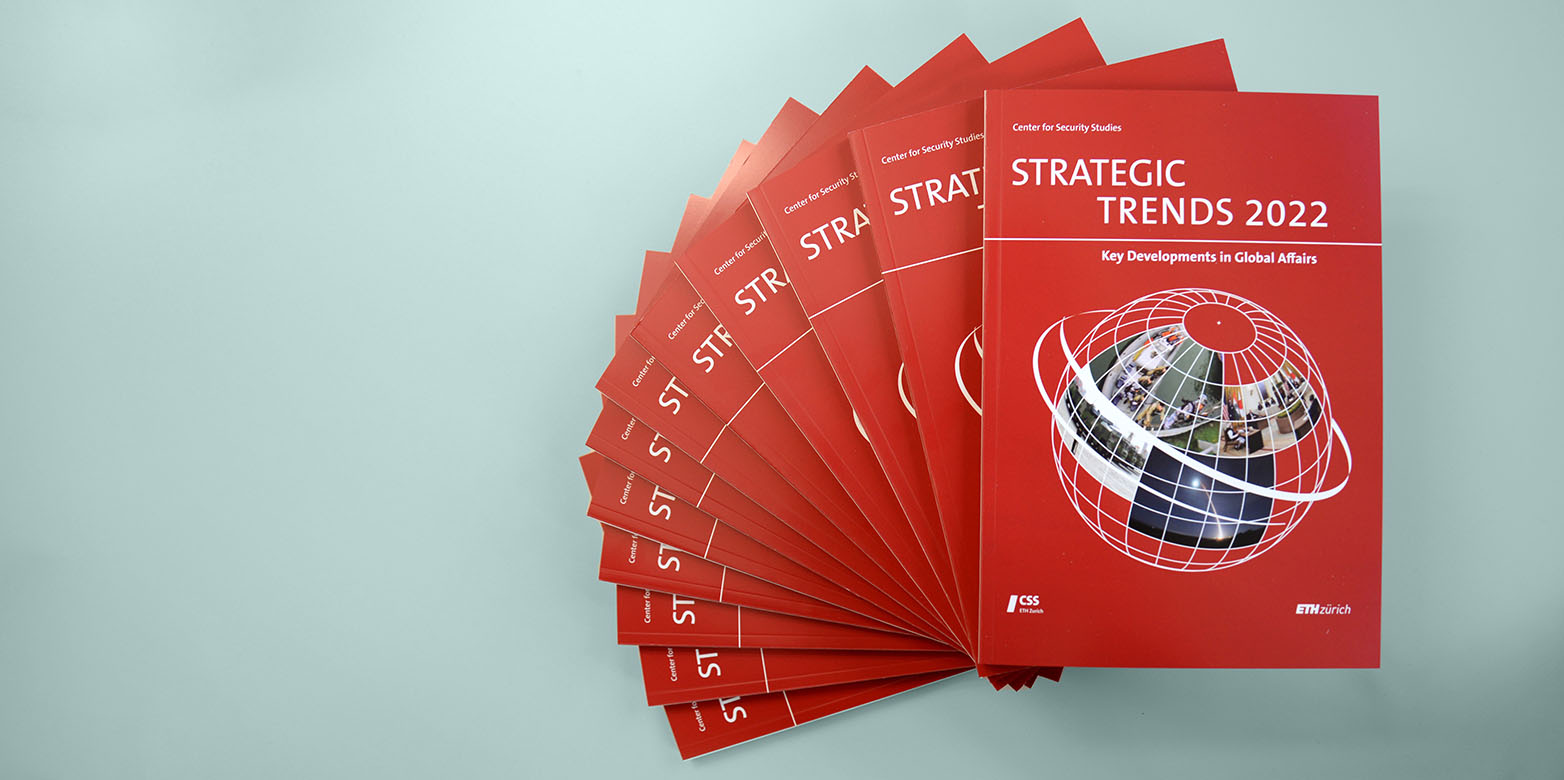Strategic Trends 2022: Arms and Influence
Strategic Trends 2022 attempts to address important trends in world politics at a time of rapid change and high levels of uncertainty. The authors have covered events up to April 1, fully aware that the situation could change considerably by the time of this volume’s publication. The four chapters cover important strategic trends that will shape international security in the years ahead regardless of the outcome of Russia’s war in Ukraine. Together, they address issues of arms and influence.

ETH Tagung «Weltpolitische Lage 2022»
external pageNZZ Article on Chapter 3 (in German)
external pageNZZ Article on Chapter 4 (in German)
Throughout its 13-year history, the Strategic Trends series has sought to identify and analyze major trends that are shaping the landscape of international security. In some cases, however, events simply overtake such efforts and upend plans. This year’s edition is a case in point. On February 24, 2022, Russia launched a massive invasion of Ukraine, an act that promised to have major implications for European security as well as worldwide repercussions. In December 2021, just over two months before the invasion, Russia issued two documents calling for wholesale revisions to the European security order. The invasion also occurred less than three weeks after China and Russia, two authoritarian powers that have worked increasingly closely in recent years to challenge the existing international order, issued a joint declaration stating that their partnership had “no limits.”
These events coincided with the planning of Strategic Trends 2022 and the drafting of five planned chapters for this volume. Following the invasion, when the work was already well advanced, the authors were forced to change their plans significantly.
Strategic Trends 2022 features chapters on China-Russia relations and Asian security, hypersonic weapons, transatlantic security and prospects for nuclear arms control, and the development of the Indo-Pacific concept.
Chapter 1: China-Russia Relations and Asian Security
By Brian G. Carlson
China and Russia continued to draw closer together in the run-up to Russia’s invasion of Ukraine. If their partnership remains strong in the war’s aftermath, then the implications are likely to be far-reaching, including for Asian security. Competition between rival blocs could define the international system. US and allied concerns about a two-front war would continue to grow. In Asia, where China and Russia have expanded their bilateral defense cooperation, China might someday call on Russia for direct military support in an armed conflict.
Chapter 2: Hypersonic Weapons: Emerging, Disruptive, Political
By Dominika Kunertova
Hypersonic weapons can travel at extreme speeds in the earth’s atmosphere and maneuver along an unpredictable trajectory. They are also overhyped. This chapter explains how three trends – unsubstantiated claims about the effectiveness of hypersonic weapons in development, politicized technological competition, and a widening spectrum of missile threats – obscure our understanding of the hypersonic military capability. The hype about hypersonic weapon programs is more dangerous than hypersonic technology itself.
Chapter 3: Transatlantic Security and the Future of Nuclear Arms Control
By Névine Schepers
Russia’s war in Ukraine has significantly dimmed prospects for nuclear arms control while highlighting the risks of nuclear use. With the complete overhaul of Europe’s security architecture at play, arms control – particularly in the form of risk reduction measures – remains an essential political tool to prevent nuclear escalation. It can also balance the conflicting demands of strengthening deterrence and the pursuit of disarmament objectives, particularly in Europe.
Chapter 4: Indo-Pacific: The Reconstruction of a Region
By Boas Lieberherr and Linda Maduz
The Indo-Pacific represents a new conceptualization of who and what constitutes Asia. Australia, India, Japan, and the United States are its main proponents. The Indian Ocean region and the Asia-Pacific are understood as one contiguous area. Although the new concept’s trajectory remains unclear, the transition from the hitherto used “Asia-Pacific” is associated with four overarching trends: a shift from an economy- to a security-dominated agenda, bottom-up to top-down regionalism, multilateralism to minilateralism, and including to excluding China.
